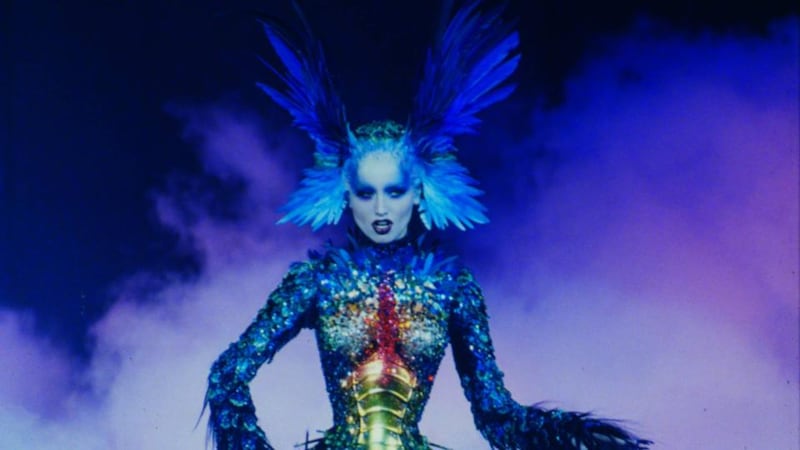One of the industry’s foremost catwalk photographers, Niall McInerney, now 74, never set out to work in fashion. The Limerick man, who was schooled by the same Jesuits as Richard Harris and Terry Wogan, left home for London at 16 with £20 in his pocket. He fell into the business almost by accident and then spent 20 years behind the lens.
His photographs, which regularly feature in books on fashion, now form the centrepiece of the first one devoted to his own work called Fashion's Front Line a chronicle of his photography from when he started on the international runways in the early 1980s to when he decided to quit more than ten years ago. It's a visual feast.
Hundreds of his pictures tell their own story of the changing decades and methods of photography, the models, main players and well-known designers, but what also comes across is his eye for the whole scene behind the catwalk and beyond.

He was one of the first to capture the energy and spirit of backstage life, anticipating what was to become a standard editorial feature. His desire to photograph people in the street was a forerunner of what is now a fashion cliché.
His most famous and best-selling picture was of Naomi Campbell toppling off her purple platform shoes at a Vivienne Westwood show in 1993 in Paris.
At the time he was an inhouse photographer for Westwood in a small venue near the Palais Royal and got the shot on the second showing.
“It was pure luck,” he recalls. He remembers how “absolutely fantastic” some of the supermodels were, such as like Christy Turlington and Kate Moss, but that Naomi was “always moaning” and Claudia Schiffer used to erect screens around herself backstage so she could not be photographed without makeup.
“The girls were something else. I remember being in shock at Montana, my first show – these creatures were like something from another planet.”
McInerney’s life took various twists and turns – working in an ice-cream factory, as a British Rail porter, a cinema usher – and then in a Soho strip club before meeting the photographer Lewis Morley who taught him.
It was when he met the founders of 1970s fashion label Swanky Modes who wanted him to take pictures of their collection that his career started to take off in earnest leading him to become a regular presence on the international catwalks twice a year in London, Paris, New York and Milan: “And the goddam thing paid”.
A successful custodian of the catwalk for so long, he finally quit because, “I had had enough of it and it was getting boring and more controlled.”
He remembers, for instance, going backstage after a show by Alexander McQueen which had been sponsored by American Express “and I could only take a photo if their logo was in the background. It was horrendous.”
Today, he continues to photograph the BA graduate student shows at Central St Martins in London and gives talks and lectures in the fashion colleges. His photography “is evolving into what I was trying to be – a Cartier Bresson type of photographer”, he says.
He has worked in other areas such as architecture but held on to his library. "I got a good 20 years out of [catwalk photography] but there is a time when you have to say basta [enough]"
Digital photography and social media have transformed the industry, but two photographers that he rates are women – the Dutch fashion photographer Viviane Sassen and the late US street photographer Vivian Maier. “To do pictures like she does makes [street photography] look easy. It is art concealing art.”
As for his Irish roots, he keeps in touch with his two sisters in Limerick and has just discovered a box of letters from his parents who were “fantastic letter writers with good handwriting” and a box of old negatives from which he plans to make Christmas presents.
And he has land in Clare, but “to move home is a kind of dream . . . but it would be a no-no now.”












